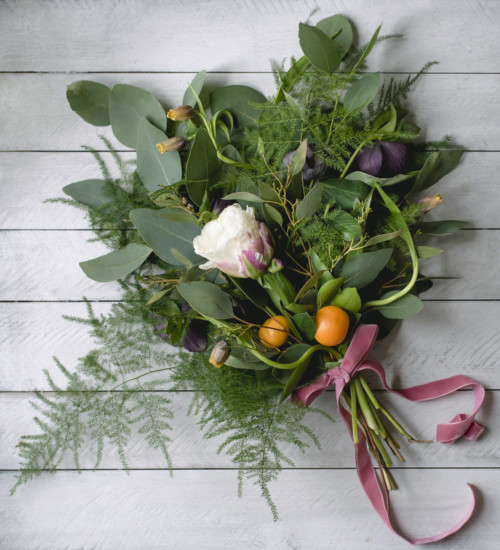
Ask Ella: How To Use Fruit In Bouquets
Ask Ella is a recurring Garden Collage feature where we ask our in-house florist, Ella Stavonsky, about floral design– including the history of, origin, and maintenance that goes into some of the most intriguing flowers on the market today. This column is dedicated exclusively to common and rare varieties of flowers you’re likely to find at your local market. This week, we spotlight how to elegantly incorporate fruit into bouquets.
The phrase “fruit in bouquets” often conjures images of edible arrangements wrapped in thick plastic: giant slices of orange on skewers, balled melon, flower shaped pineapple slices with faces drawn on in thin chocolate lines.
Fortunately, using fruit in bouquets doesn’t have to be over the top and cheesy.
The fruit you’re most likely to encounter for use at a florist’s is kumquat, still attached to branches (pictured here). Less likely– but still possible– are stems of pomegranate, ornamental peppers, artichoke, and miscellaneous berries.
In general, when purchasing, you should look for fruit that’s still underripe, in order to keep your arrangement alive as long as possible. When it comes to incorporating the fruit into the arrangement, be sure to give them a fresh clip and split their stems as much as possible. Remove any fruit that’s starting to look old. (You’ll want to repeat this process every few days.)
As a rule of thumb, fruit tends to work best as a sparing filler in wild-foraged or Mediterranean style bouquets, alongside elements like trailing vines, ranunculus, sprigs of rosemary, or other bold florals like poppies.
Feeling adventurous? Try slicing citrus in half and mounting them on skewers.


































